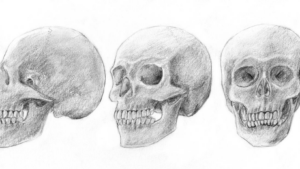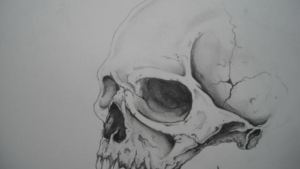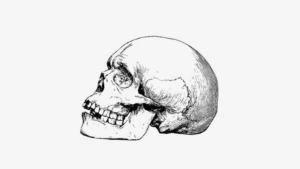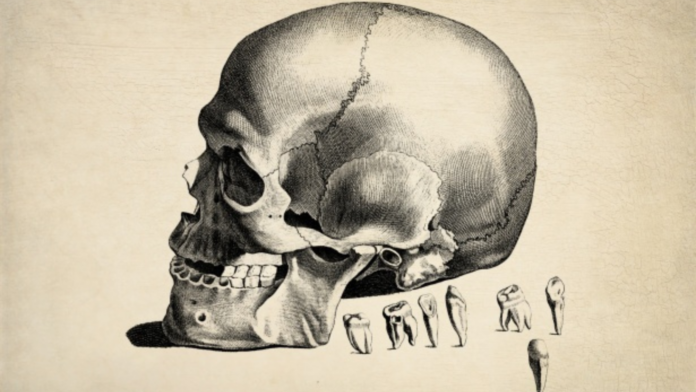Drawing, an art as old as humanity itself, takes many forms and subjects. Among these, one stands out due to its symbolic richness and technical challenge: the skull. It’s a subject that’s fascinated artists for centuries, from the old masters to contemporary creatives.
The skull, with its complex structure and deep symbolism, offers a unique canvas for artists to explore which cannot be replaced. It’s not just about capturing the physical form, but also delving into the essence of life and mortality. Whether you’re an experienced artist or a beginner, the journey of drawing a skull can be a transformative experience.
Join us as we delve into the world of skull drawing, exploring its history, significance, and the techniques that can help you master this intriguing subject. With patience and practice, you’ll find that drawing a skull is not just a technical exercise, but a doorway into deeper artistic expression.
Drawing:oldj_7nsvxk= Skull
The art of skull drawing embraces technical skills while delving into life’s profound themes. Let’s delve deeper into its historical significance, and examine popular techniques and latest trends for drawing skulls.
History and Significance

Tracing back to ancient times, skull symbolism permeates cultural and artistic traditions worldwide, revealing humans’ enduring fascination with life’s transience. Artists have frequently incorporated skull depictions into their work throughout history, acknowledging its dual representation of mortality and transcendence.
Historically, skulls in art often portrayed a potent reminder of life’s fleetingness, evident in memento mori art from the Middle Ages and Vanitas paintings of the Baroque period. Simultaneously, diverse cultures, from the Celtic to the Mexican, embraced skull iconography in their ceremonial and artistic traditions, underlining its universal significance.
Popular Techniques and Styles
Artists employ a variety of techniques and styles to render skull drawings, reflecting their personal artistic philosophies and aesthetic preferences. Realistic drawings aim to capture the skull’s intricate structure, with meticulous attention to light and shadow, line work, and volume – all critical facets in drawing a skull accurately.

Expressive skull drawings, on the other hand, veer away from anatomical precision, utilizing exaggerated lines, forms, and colors to generate a distinctive aesthetic and emotive impact. For instance, in graffiti art or graphic novels, artists often stylize skull illustrations imbued with cultural, personal, or political messages.
Essential Tools for Skull Drawing
Successful skull drawing requires the right tools for the job. Below, we explore the necessity of high-quality pencils, erasers, and paper.
Choosing the Right Pencils and Erasers
Selecting appropriate pencils and erasers plays a crucial role in rendering a skull effectively. Rich, dark pencils such as 4B or 6B graphite pencils, for instance, provide deep, bold lines for capturing a skull’s shadows and textured surface. Pro-grade erasers, like the kneaded and vinyl types, allow for precise corrections, softening harsh lines and creating highlights.
Importance of Quality Paper

Likewise, making an informed choice for paper is pivotal in skull drawing. High-quality, cotton-based paper, such as Bristol board or watercolor papers, prove beneficial for their smooth texture and durability, accommodating several layers of shading from light to dark. This variety of textures, from the smooth contours of the skull to the deep cavities of the eye sockets, can be drawn out effectively with the right kind of paper. Resistance to erasing and smudging, too, plays into selecting the best paper for skull artworks.
Deeper Artistic Expression
So, we’ve journeyed through the rich tapestry of skull drawing, from its historical roots to the digital frontier. We’ve seen how the skull, a potent symbol of life’s fleeting nature, can be a gateway to profound artistic expression. With the right tools and techniques, anyone can create realistic skull drawings. As we’ve discovered, digital platforms like Adobe Photoshop, Procreate, and Corel Painter offer artists a new arena to flex their creative muscles.
However, the transition from traditional sketching to digital isn’t always smooth sailing. It’s crucial to master the new tools while not neglecting the core skills. But with patience and practice, the digital world opens up a universe of possibilities, enabling artists to create dynamic, original skull drawings. So, why not pick up a stylus or a pencil and start your own artistic journey?


